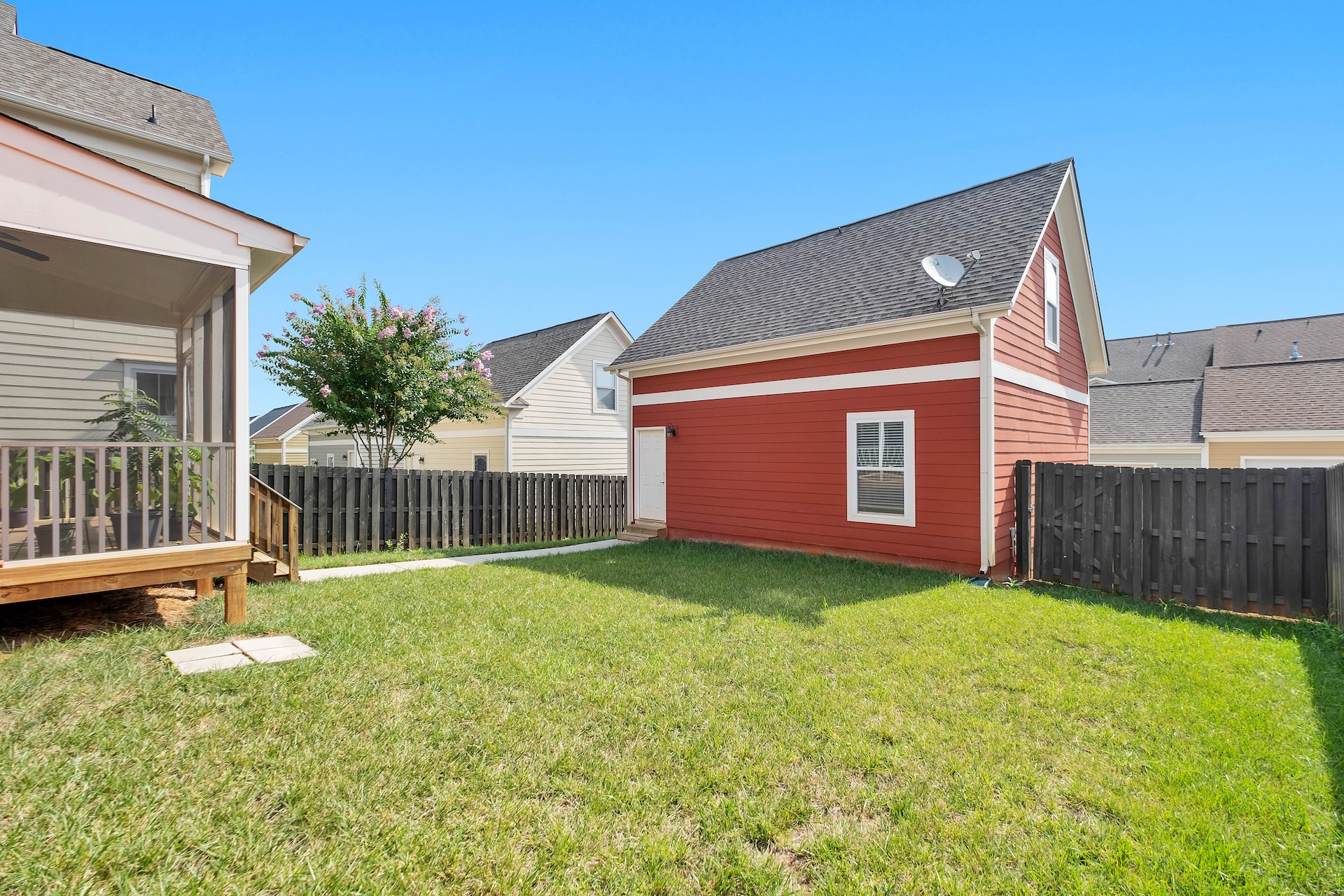In summer, our yards are our place to dine, relax, and spend some quality time with our families. They house our swimming pools, patios, playhouses for our children, and more importantly, they’re part of the classic American Dream. But this obsession with thick green plots isn’t as old as you might think. The concept of backyards as a spot of leisure and fun only dates back to the early 1950s.
Following World War II, Americans started moving out of the center of big cities and settling in suburbs, and that is where the story of the American backyard begins. The implementation of the 40-hour work week, better white-collar jobs, and higher wages meant suburb residents had enough disposable income to spend on DIY projects. For instance: transforming their backyard into a green well-kept lawn. This DIY trend became popular to the point where owning a backyard was seen as a symbol of affluence.
The Backyard a Workspace
An backyard with old furniture:
But before this fashion took root, American backyards served a strictly utilitarian purpose. You’d have found most families growing vegetable gardens, raising chicken, pigs, and sometimes even cows, storing supplies underground, and dumping the garbage in their backyards. Outhouses were another essential part of the backyard in those days. Said another way, the backyard was a workplace and a place to support the household economy.
Photographs from the late 19th century reveal backyards that contain small structures like barns and storage sheds. Back then, the only outdoor leisure activities happened on the porch, which was stretched in front of the house. This trend lasted until the 1920s when radios (and with it, indoor entertainment) became more popular.
The backyard’s status as a functional space prevailed up until World War II, and even after that, it would be years before the American yard is seen as a site for rest and relaxation. Post World War Two, the economy rebounded, and people started spending their new-found disposable income on things once considered luxuries.
The Influence of Consumerism
People sitting in a backyard:
And this ‘spending’ cleared the backyard of the clutter mentioned above. Here’s how. As modern refrigeration became more common, the need for underground storage disappeared. The same happened with sewage infrastructure and outhouses.
More to the point, backyards were critical functioning components of households because homes back then were self-sufficient and self-contained. But now that everyday necessities didn’t have to be grown, raised, or collected, they could be bought in bulk quantities and stored, the yard was repurposed. It was clean of heaps of trash, outhouses, chicken coops, and even vegetable gardens for the most part.
With this freshly-minted consumer culture, innovations, and affordable automobiles (that were parked in the garage which separated the street front from the yard in the back), paved the way for the modern backyard that we know and love.
It’s 50’s or the 60’s now, and the general population has got all this free space. And it wasn’t just free space either. With consumerism, came more free time since homeowners didn’t have to labor endlessly in their yards to support their families. This phenomenon facilitated the shift from a strictly utilitarian point of view made the backyard a mark of prosperity and high status — ultimately becoming part of the American Dream in the early 60s.
Grass
A backyard with grass and trees:
Now that there was space for the project, the only thing left was for technology (needed to maintain a backyard) to catch up and become more affordable. The lawnmower had been around since the 19th century, but before its advent, the only way to maintain a closely-shaved lawn was with the aid of scythe-wielding keepers.
Post-Depression when appliances became cheaper and widely available, the crucial tool needed for a manicured lawn was easily accessible. The yard might include a fenced in garden for growing vegetables.
Yet another challenge was to find grass types that would not only thrive in different climates in America but would also be durable and attractive. The U.S. Golf Association and the U.S. Department of Agriculture found different grass combinations from Europe and Africa that were ideal for the variety of American climes. Today, you’ll find some lawns supplementing their lawns with artificial grass for perpetually shaded patches.
Other Elements
Moden backyard with wooden patio:
Speaking of materials, the manufacturers who produced concrete and aluminum for the war, pivoted after the war and adopted a consumer-oriented approach. And this part of the story is where the concept of backyards as outdoor living spaces developed. These wartime manufacturers produced everything from patio furniture to affordable concrete for in-ground pools.
But this leisure/entertainment wouldn’t be complete without crucial elements, the deck, and patio. The unpaved ground wasn’t usable when it rained, so it was covered with either a deck or patio.
Then came the proliferation of swimming pools and outdoor barbecue kitchens. And this is how the once-practical workspace was utterly transformed into a center for outdoor fun activities and communal rituals. Families spend quality time there in the shade of a roof or a canopy.
A Few Caveats
Pathway between grass:
Today, American backyards 63,000 cover square miles and the grass on them is the most popular crop nationwide. That said, there’s no denying that backyards aren’t without their problems. An average-sized lawn needs 200 gallons of fresh water every day, which makes lawns resource-hogs, especially in drought-stricken areas like California.
Tons of fertilizer and pesticides are also dumped on lawns to keep the grass emerald-green, but unfortunately, they can often leech into the underground water supply, contaminating it. The trend of home ownership (something which the American backyard represents) is also dying.
Final Thoughts
In a nutshell, the peace after the World War, the growth of the middle-class, development of suburban communities, and a burgeoning idea of home ownership are what made the American backyard what it is today.

